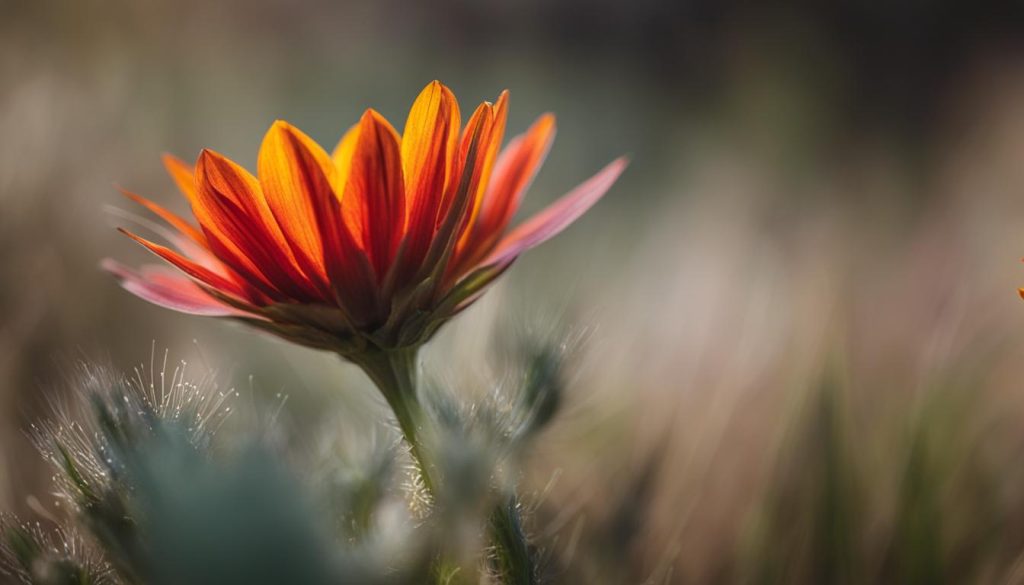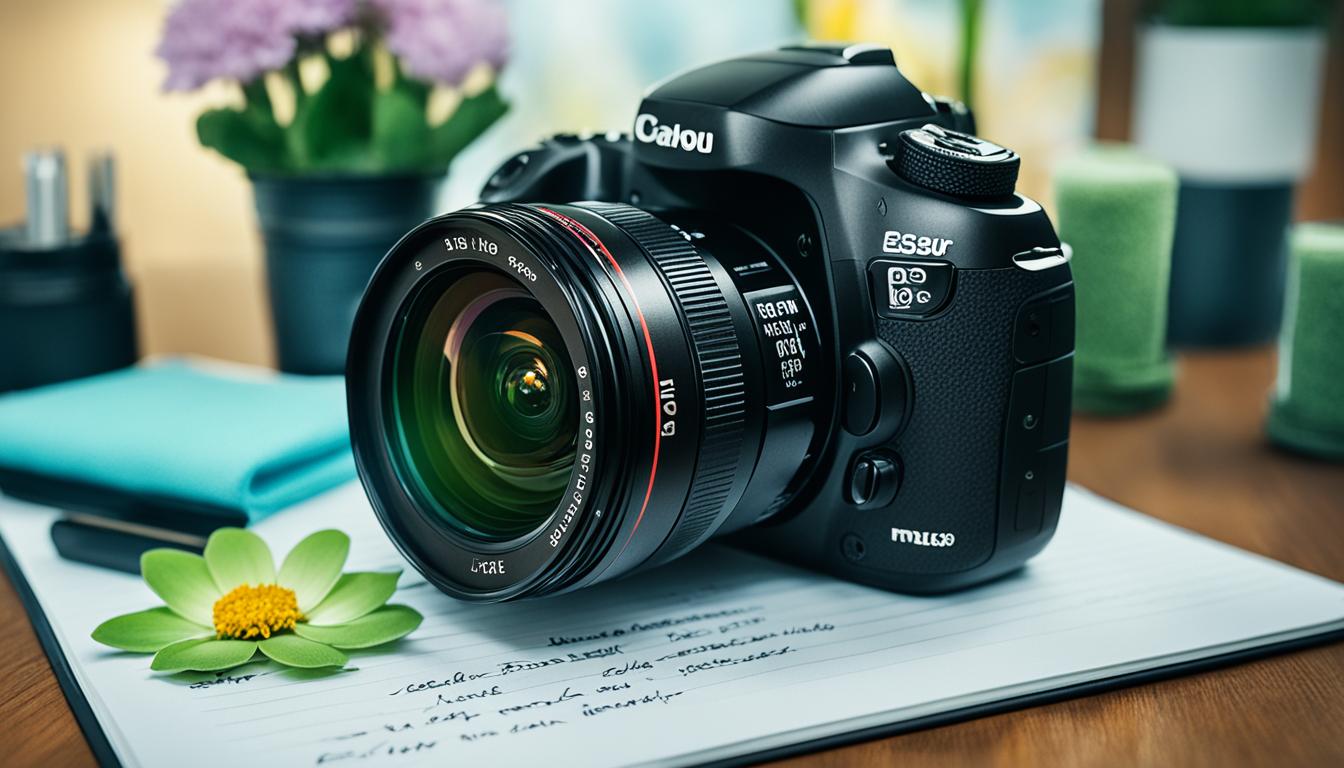If you’re looking to improve your macro photography skills and capture stunning close-up shots, then you’ve come to the right place. In this section of our article, we’ll provide you with an essential macro photography checklist to help you get started.
Macro photography can be challenging, but with the right tools and techniques, you can create incredible images. Whether you’re a beginner or an experienced photographer, this checklist will ensure that you’re prepared for every macro photography opportunity.
Key Takeaways
- The right macro lens is essential for capturing sharp macro shots.
- Setting up your shot correctly can make a big difference in the final result.
- Controlling the depth of field is crucial in macro photography.
- Composition techniques can enhance the overall look of your macro shots.
- Be prepared to overcome challenges such as camera shake and focusing difficulties.
Choosing the Right Macro Lens
If you want to capture stunning macro images, choosing the correct macro lens is crucial. There are several types of macro lenses, including short, medium, and long, each with their own focal lengths and features.
A short macro lens with a focal length of around 50mm is a great option for beginners and those on a tight budget. It allows you to get close to your subject while still being versatile enough for other types of photography. For those who want a bit more reach, a medium macro lens, such as a 90mm, is ideal. It allows you to get closer to the subject while maintaining more distance between you and the subject.
Long macro lenses, such as those with a focal length of 150mm or greater, are perfect for capturing insects and other tiny subjects from a safe distance. These lenses also produce stunning, compressed images with a shallow depth of field, making them a popular choice for portrait photography.
When choosing a macro lens, consider your shooting style and your budget. A high-quality macro lens can be a significant investment but will pay dividends in the long run with sharp, detailed images.
Setting Up Your Macro Shot
Macro photography allows you to capture the smallest details in stunning clarity. To ensure your macro shots are sharp and well-lit, it’s important to set up your shot correctly. Here are some tips for macro shot setup:
Camera settings
Adjust your camera settings based on the lighting conditions and the type of macro shot you want to capture. For example, if you’re shooting a still subject, use a low ISO to minimize noise and a narrow aperture for greater depth of field. Experiment with different settings to find the perfect combination for your shot.
Lighting
Proper lighting is essential for macro photography. Natural light can be beautiful, but it’s not always reliable. Use diffused artificial light sources like softboxes or reflectors to evenly light your subject.
Tripod usage
Macro photography requires a steady hand, which is why using a tripod is highly recommended. A tripod allows you to keep your camera steady and maintain accurate focus. Use a remote shutter release or set a timer to avoid camera shake when pressing the shutter button.
Experimentation is key
Don’t be afraid to try new things and experiment with angles, lighting, and composition. Macro photography is a great opportunity to unleash your creativity and capture unique, stunning shots.
Mastering Depth of Field in Macro Photography
If you want to create stunning macro photographs, mastering depth of field is crucial. Depth of field refers to the range of distance that appears sharp in your image. In macro photography, you’re working with a very shallow depth of field, which means only a small area of your subject will be in focus.
To control the depth of field, aperture is the most important setting you need to adjust. A wider aperture will decrease the depth of field and create a blurrier background, while a narrower aperture will increase the depth of field and bring more of the subject into focus.
Keep in mind that the exact aperture setting will depend on the specific lens you’re using and the distance between your camera and the subject. Experiment with different aperture settings to find the ideal depth of field for your particular shot.
Another factor that affects depth of field is the distance between your camera and the subject. The closer you are, the less depth of field you will have. This is where macro lenses come in handy, as they allow you to get closer to your subject while maintaining a wide aperture and shallow depth of field.
Don’t be afraid to play around with depth of field to achieve the desired effect. Using a shallow depth of field can create beautiful bokeh effects in the background, while a wider depth of field can bring more detail to your subject. Try different techniques to see what works best for your style of macro photography.
Tip: If you’re struggling to achieve the desired focus, try using manual focus rather than relying on autofocus. This will give you more control over the depth of field and help you achieve the perfect level of sharpness in your macro photos.
Composition Techniques for Macro Photography
Macro photography composition is all about arranging the subject in the frame to create a visually appealing image. Here are some techniques to help you achieve that:
Rule of Thirds
Divide your image into thirds, both horizontally and vertically, creating nine equal parts. Place your subject at the intersection of any of these lines to add balance to your composition.
Leading Lines
Use lines to guide the viewer’s eye and draw attention to the subject. These lines can be curved or straight and can be found in nature or created by objects in your shot.

“The most important thing about composition is that you have something to say.” – Paul Strand
Negative Space
Don’t be afraid to leave some empty space around your subject. This technique can create a sense of balance and draw attention to the subject.
Experiment with different composition techniques to find what works best for your subject and personal style.
Overcoming Challenges in Macro Photography
While macro photography can be incredibly rewarding, it also comes with its own unique set of challenges. In this section, we’ll explore some of the most common difficulties and offer tips and tricks to help you achieve better results.
Camera Shake
One of the biggest challenges in macro photography is keeping your camera steady. With your lens so close to your subject, any movement can result in blurry, unusable images. To combat camera shake, try using a tripod, pressing your camera against a solid object, or using image stabilization. Additionally, using a remote shutter release can help reduce movement caused by pressing the button yourself.
Focusing Difficulties
When shooting in macro, it can be challenging to achieve proper focus. It helps to set your camera to manual focus mode and use the magnification function to ensure your focus is sharp. Additionally, practice adjusting your aperture to control the depth of field and make sure the part of the subject you want in focus is clearly defined.
Dealing with Tiny Subjects
Macro photography often involves shooting incredibly tiny subjects, which can be difficult to capture. Try using a longer lens to give yourself more distance from your subject, and experiment with different lighting techniques to make small details pop. Lastly, don’t be afraid to adjust your composition. Sometimes, moving slightly to the left or right or shooting from a different angle can help you get the shot you want.
Remember, macro photography is all about experimentation and learning what works best for you. Don’t be afraid to try new techniques and adjust your settings until you achieve the desired results. With patience and practice, you’ll overcome these challenges and produce stunning macro images.
Final Thoughts
Now that you have a comprehensive understanding of macro photography and its essential checklist, it’s time to get out there and start shooting. Remember, practice makes perfect. Don’t be discouraged if your first attempts don’t turn out as expected. Experiment with different camera settings, lighting, and composition techniques until you find the perfect combination that works for you.
You’ll soon discover that macro photography is a fascinating and rewarding genre that allows you to capture intricate details and hidden beauty in the world around us. With a little patience and a lot of practice, you’ll be creating stunning macro images in no time.
So, grab your camera and start exploring the fascinating world of macro photography today!






